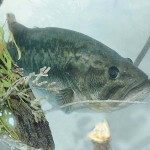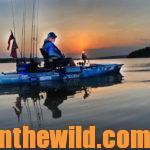Editor’s Note: Simply finding a deer trail won’t provide enough information to hang a tree stand and plan to hunt that trail. Many ingredients make some deer trails better than others. To effectively hunt trails, you need to know:
* why and when the deer use the trail;
* where the deer will go; and
* what time of day or night the deer will move down the trail.
With this information, you can hunt trails and take deer more productively than a hunter who simply finds a trail and hangs a tree stand. Let’s take a closer look at some different types of deer trails, and what you can learn from these trails to help you hunt deer more effectively.
One time when I was hunting deer in a swamp, it had flooded, and acorns floated on the surface of the knee-deep water. From the numbers of cracked acorns on the bank, I knew deer had fed at this site, although I couldn’t locate any tracks. I decided to sit on the edge of the slough all day to learn the movement patterns of the deer. In the early-morning light, I could hear acorns popping and water pouring as I made out a dark figure in the 2-foot-deep water. Using my binoculars, I focused on a fat doe knee-deep in the flooded timber, picking up acorns in her mouth, letting the water run out of her mouth, cracking the acorns and eating the meat of the nuts. In 2-l/2-hours, I watched l5 other does moving along the edges or in the shallow water eating acorns. These deer walked along an underwater path that led through the flooded timber and their food.
Once on another flood plain, I located deer tracks going into the water just at dark. The next morning I set up a tree stand 20 yards from where I’d seen the tracks going into the backwoods beaver pond. As I watched, deer moved back and forth across the pond – apparently on an underwater ridge only 4-5 inches below the surface but not visible from the shore. Hunting this underwater ridge produced two fine bucks for me during that season.
Hunters consider food trails the easiest and most-obvious places to attempt to take deer. However, you must set-up on a food trail in the correct place to have success. You can follow a food trail easily that leads to an agricultural field, because generally the deer will enter the field at a corner, a point or some other obvious passageway. Take a stand 20-30 yards inside the woodline along the trail that goes to the field. However, the more often someone hunts the trail, the more sensitive the deer will become to hunting pressure and probably will stay well down the trail before dark.
As my friend retired wildlife biologist Sam Spencer comments, “I set-up well away from a food plot to intercept a deer earlier, since many deer won’t enter a food plot until almost dark to be safe. Then the light’s too bad for me to shoot accurately.” Often the bigger, better-sized bucks will wait until just before dark, l00-200 yards down the trails that lead to the green field. If you can find an alternative food source like an acorn tree or some wild vegetation where deer feed along that trail leading to the green field, you’ve located a productive spot to bag a buck. Look for the most-productive food trees in isolated regions. If several trails from various directions lead into a food tree, you may not know where to place your tree stand. However, you can funnel deer from one trail to another by using human odor as a barrier on the trails you don’t want the deer to travel down.
My longtime hunting buddy, Ronnie Groom of Panama City, Florida, suggests, “Move l50-200 yards away from the food tree. Then walk across each of the trails you don’t want the deer to use – carefully leaving plenty of human odor on these trails. When the deer come down the trail you’ve tried to X out, they’ll smell human odor, leave the trail they’re on and move to the trail you want them to walk down that doesn’t have human odor on it.”
 To learn more about hunting deer with John E. Phillips’ Amazon Kindle eBooks, print books and Audible books (the latest Audible is “How to Hunt Deer Like a Pro”) and Nook books, click here at https://johninthewild.com/books/#deer. You can type in the name of the book and download it to your Kindle, and/or download a Kindle app for your iPad, SmartPhone or computer. For a free download on how to make jerky from venison to provide a protein-rich snack, choose “How to Prepare Venison Jerky: The Ultimate Snack Food” at johninthewild.com/free-books.
To learn more about hunting deer with John E. Phillips’ Amazon Kindle eBooks, print books and Audible books (the latest Audible is “How to Hunt Deer Like a Pro”) and Nook books, click here at https://johninthewild.com/books/#deer. You can type in the name of the book and download it to your Kindle, and/or download a Kindle app for your iPad, SmartPhone or computer. For a free download on how to make jerky from venison to provide a protein-rich snack, choose “How to Prepare Venison Jerky: The Ultimate Snack Food” at johninthewild.com/free-books.












